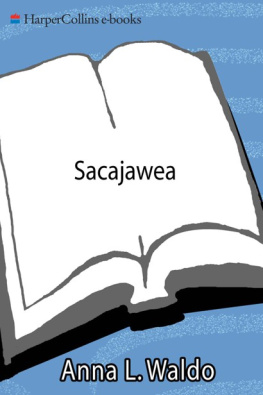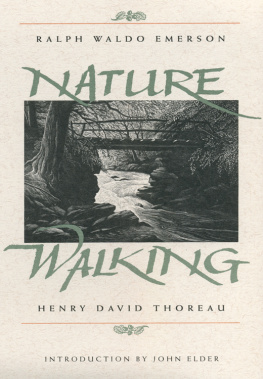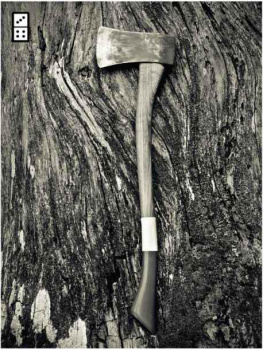Anna Lee Waldo - Sacajawea
Here you can read online Anna Lee Waldo - Sacajawea full text of the book (entire story) in english for free. Download pdf and epub, get meaning, cover and reviews about this ebook. year: 2009, publisher: HarperCollins e-books, genre: Art. Description of the work, (preface) as well as reviews are available. Best literature library LitArk.com created for fans of good reading and offers a wide selection of genres:
Romance novel
Science fiction
Adventure
Detective
Science
History
Home and family
Prose
Art
Politics
Computer
Non-fiction
Religion
Business
Children
Humor
Choose a favorite category and find really read worthwhile books. Enjoy immersion in the world of imagination, feel the emotions of the characters or learn something new for yourself, make an fascinating discovery.
- Book:Sacajawea
- Author:
- Publisher:HarperCollins e-books
- Genre:
- Year:2009
- Rating:3 / 5
- Favourites:Add to favourites
- Your mark:
- 60
- 1
- 2
- 3
- 4
- 5
Sacajawea: summary, description and annotation
We offer to read an annotation, description, summary or preface (depends on what the author of the book "Sacajawea" wrote himself). If you haven't found the necessary information about the book — write in the comments, we will try to find it.
Sacajawea — read online for free the complete book (whole text) full work
Below is the text of the book, divided by pages. System saving the place of the last page read, allows you to conveniently read the book "Sacajawea" online for free, without having to search again every time where you left off. Put a bookmark, and you can go to the page where you finished reading at any time.
Font size:
Interval:
Bookmark:

ANNA LEE WALDO

In memory of my father,
Lee William Van Artsdale
The tropical emotion that has created a legendary Sacajawea awaits study by some connoisseur of American Sentiments. More statues have been erected to her than to any other American woman. Few others have had so much sentimental fantasy expended on them. And she has received what in the United States counts as canonization if not deification: she has become an object of state pride and interstate rivalry.
Bernard DeVoto, The Course of Empire.
New York: Houghton Mifflin Co., 1952, p. 618.


IN THE BEGINNING
A mysterious relic in the Big Horn Mountains west of Sheridan, Wyoming, in Shoshoni country, is an elaborate circular pattern traced out in stone on a flat shoulder near the top of a 10,000 foot remote peak. The Medicine Wheel has a circumference of two hundred forty-five feet, with twenty-eight spokes and six stone cairns spaced unevenly around its rim, and a seventh about fifteen feet from the wheel. These shelters are very low with a slab of rock across the top. Two of the cairns zero in on the rising sun of the first day of summer summer solsticewhen the sun reaches its northernmost rising point on the horizon. Two of the cairns zero in on the summer solstice sunset. Alignments of others point to the rising points of three bright stars, Alde-baran, Rigel, and Sirius. West of Armstead, Montana, now Hap Hawkins Lake, near U.S. 91, south of Dillon, Montana, is another wheel-shaped pattern of stones. These undoubtedly predate the Shoshoni nation as we know it.
Montana, A State Guide Book, compiled and written by the Federal Writers Project of the WPA for the State of Montana. New York: The Viking Press, 1939, pp. 32, 292.
JOHN A. EDDY , Probing the Mystery of the Medicine Wheels, National Geographic, 151 (January, 1977), p. 140.
1
Old Grandmother
The history of the Shoshoni, most northerly of the great Shoshonean tribes, which all belong to the extensive Uto-Aztecan linguistic stock, is full of paradox. They occupied western Wyoming, central and southern Idaho, southwestern Montana, northeastern Nevada, and northeastern Utah. The Snake River country in Idaho was their stronghold, but their expeditions sometimes reached the Columbia. Holding somewhat in contempt their less vigorous cousins to the southUte, Hopi, and Paiatethey themselves seem to have been almost equally despised by the Plains tribes. The northern and eastern Shoshoni were riding and buffalo-hunting Indians. Their traditions are full of references to a period when they had no horses, when small game took the place of the buffalo, and when they had no skin tepees in which to live. None of the Shoshoni were ever known to be agriculturists, but in the Wind River of central Wyoming, huge pestles have been discovered, about five feet in length, consisting of a ball eight or nine inches in diameter and a stem tapering to about four inches. They were found by Shoshoni Indians who suggest they were used for grinding grain, grass seeds, and dry berries, by some early tribe.
Wyoming, A Guide to Its History, Highways and People, compiled by Workers of the Writers Program of the WPA in the State of Wyoming. New York: Oxford University Press, 1941, pp. 52-7.
I t was early morning in the Agaidka, the Salmon Eaters encampment, and struggling puffs of cooking-fire smoke reached into the chilly dawn air. Everywhere in this Shoshoni camp there was the pungent smell of burning pine. Moving silently, robe-covered women fed each fire and cooked the first meal of the day. Inside the tepees children came half-awake; small babies felt hunger pangs and began their crying.
Near the center of the encampment was the tepee of the head chief, Chief No Retreat. This morning he rose from his pine-bough sleeping couch early, disturbed by thoughts in his mind of things he did not understand. Ages ago, beyond the time of counting, there had been a tribe living here, in the Big Horn Mountains, different from the people he knew.
The day before, Chief No Retreat and his younger daughter, Boinaiv, Grass Child, had wandered onto a great circle of stones. To him it seemed larger than the circle of the sun. He had seen the similar but smaller circle of stones to the north, but never had he dreamed there was another and of such imposing size. He was certain it had been built before the light came to the Agaidka Shoshonis, his people.
The old man had looked at the great circle then in awe and spoken to his child about the Tukadkas, the Sheep Eaters, who had built stone game blinds and bighorn sheep pens with stone fences. He had seen them often. The Sheep Eaters were once many tribes and lived in caves and mountain canyons to avoid their enemies. They had dogs to help them hunt. Now they are gone. Their time is over.
Were they happy? asked Grass Child.
Ai, they felt as we, sometimes sad, sometimes angry, and sometimes happy. They lived. Now we live.
Did they paint the buffalo in the caves?
Ai, they painted the animals they were going to hunt. This is the way they breathed life into herds so that there was always food for their people. They drew the buffalo as if he were alive. In their firelight his eyes glistened, his muscles seemed to tense beneath the hide, and his tail to lash to and fro in excitementlike the beasts grazing on the grassy hillsides.
Did they color him with the same paints we use to paint bodies before the hunt? asked the curious child.
Ai, the same. They took the best ocher and bears fat and mixed it carefully and put it on the picture with tiny sticks dipped in the paints. They used charcoal or the black earth for contours and shadows to give the beast depth or life. They used vermilion to fill in the glowing eyes.
I would like to do that, exclaimed the child.
Women are never painters of stones. They paint only clothing and their faces, laughed her father.
I could do that, though. Did the people of the sun-circle paint?
Chief No Retreat was deep with his own wondering. Were the people who built the smaller circle in the north and then this larger one of the same nation? He wondered how long ago these people had gone away from here. Who were their enemies?
As he gazed at the large circle of stones, Grass Child pointed to the center cairn, about as high as the chiefs waist. What is there?
You ask more than a girl-child should, he admonished his inquisitive offspring. Women need know only cooking, sewing, and keeping a neat tepee and a contented man.
Maybe it is Father Sun, she said. In the middle is the sun, and on the outside are the stars, and this one way over here, the moon. She laughed at her analogy. Then she counted the spokes radiating from the hub. Five hands and three fingers, she said.
The chief counted, then said, That is the number of suns from one full moon to the next.
Grass Child began to examine the six low shelters, peering under the slab roofs.
Font size:
Interval:
Bookmark:
Similar books «Sacajawea»
Look at similar books to Sacajawea. We have selected literature similar in name and meaning in the hope of providing readers with more options to find new, interesting, not yet read works.
Discussion, reviews of the book Sacajawea and just readers' own opinions. Leave your comments, write what you think about the work, its meaning or the main characters. Specify what exactly you liked and what you didn't like, and why you think so.








